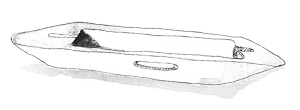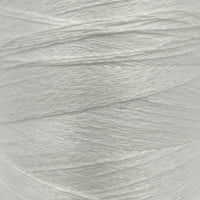
We will send you an email to reset your password.
Maurice Brassard is a family run mill in Canada that has been operating since the 1970’s. They produce a beautiful range of high quality, richly coloured cotton yarns that are perfect for weaving with.
"In 2018 I visited Leclerc Looms in Plessisville, Canada. I was visiting to look at their loom production and did not realise that they also sold yarn under the company name of 'Maurice Brassard'. I was frustrated with the lack of choice of weaving yarns in Melbourne and Australia. Our yarn is geared towards knitting and there is a big difference when it comes to the twist of weaving yarns versus knitting yarns. All 'Maurice Brassard' Yarns are suitable for both warp and weft."
Maurice Brassard
100% Linen
Count: 9/2
Length: 820m
Weight: 227g
For: Warp & Weft
Linen is a strong natural fibre from the cellulose family. It is a bast fibre, meaning it comes from long fibrous strands of the stem of a plant, in this case flax. Linen has been cultivated by humans for tens of thousands of years, making it one of the earliest cultivated crops in our history. Napoleon, concerned about the French linen industry, offered 1,000,000 francs to whoever could modernise flax production. Before this, all labour was done by hand as machines were not yet invented that could process, spin and weave linen without it breaking. This is because the strength of linen makes it very inelastic. The industry joined the industrial revolution only four years after Napoleon’s offer, with the advent of wet spinning & weaving in specially designed machines. Traditionally, linen is harvested and then ‘retted’, either in a damp field or a water source such as a pond or stream. This process can take anywhere from 14 to 28 days, and is crucial if the lingin that binds the bast fibres to the outer core is to be broken down enough for processing. The invention of a purpose built retting tank, inspired by the steam engine, cut this down from a month to a maximum of 8 days. Despite these advancements, growing & harvesting flax is still a time-consuming process that only happens in certain parts of the world.
Linen is highly prized for durability, longevity, moisture-wicking, and a soft handle that only gets better with age and laundering. Linen can easily be plied or blended with other fibers such as cotton, wool or silk, providing strength and crispness to the mixed fibres. The high tensile strength and long staple length of fibres means linen is incredibly strong, but also inelastic. During weaving, it is recommended to lightly moisten the warp yarns so they can bend slightly, when the shed is opened and closed, without breaking. Linen cloth is ideal for a variety of end uses such as upholstery, suiting, loose garments, bags, workwear, napkins, curtains, and tablecloths. Linen cloth creases easily, and can be steamed or ironed at high heat.










